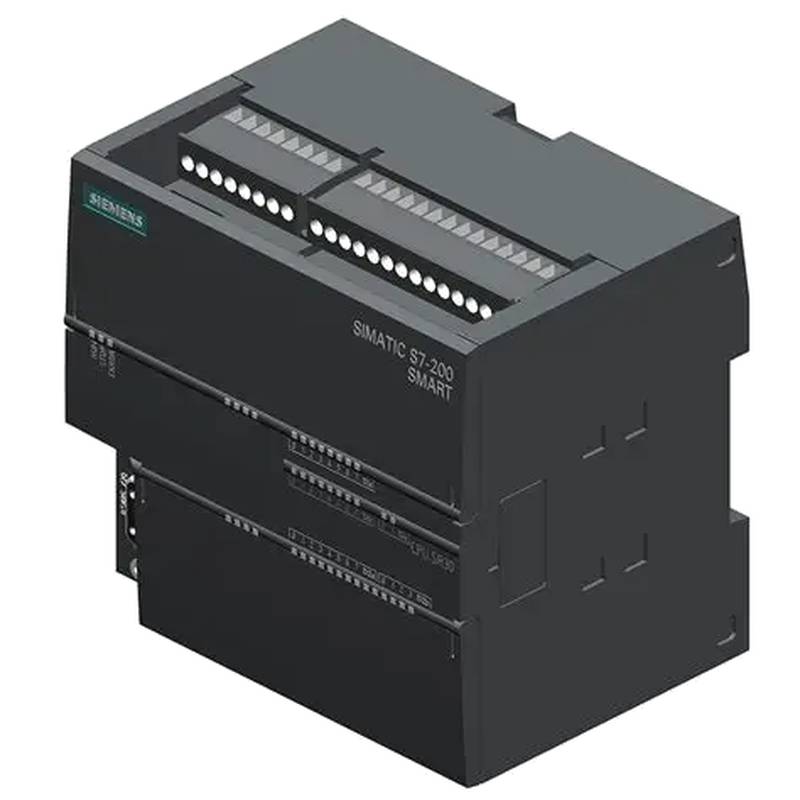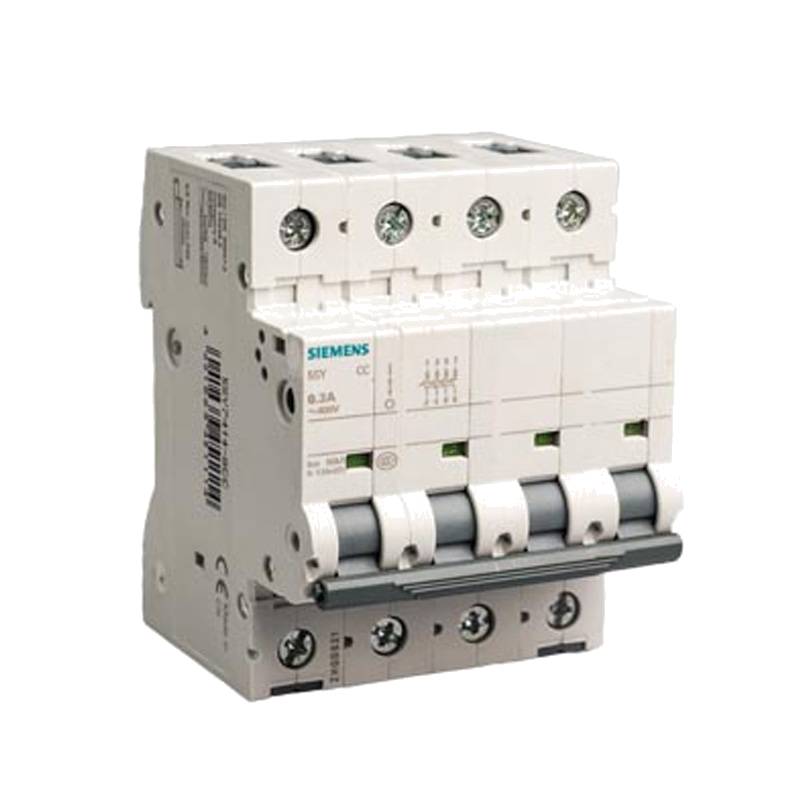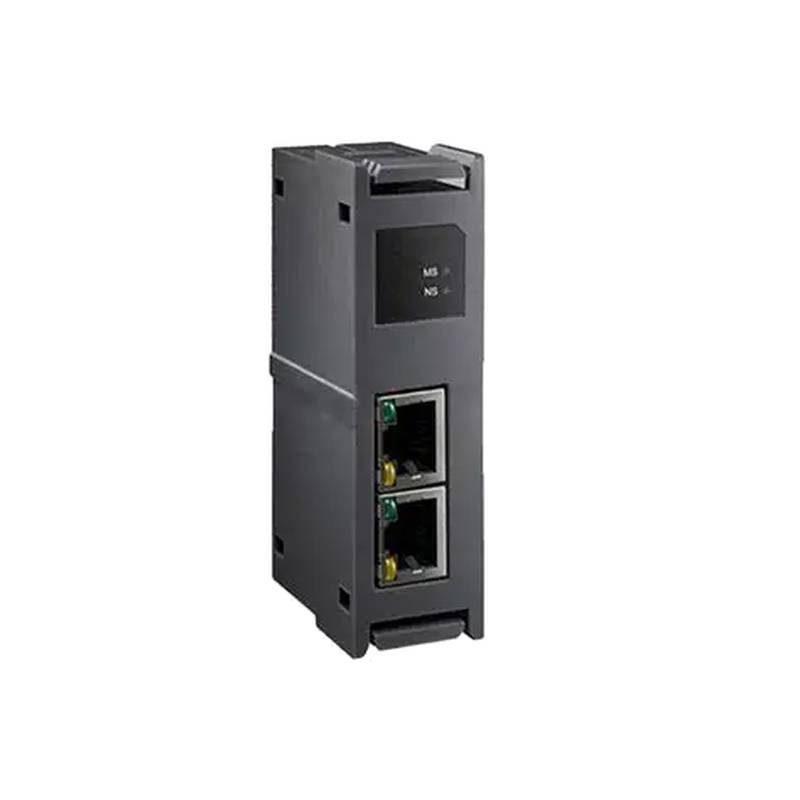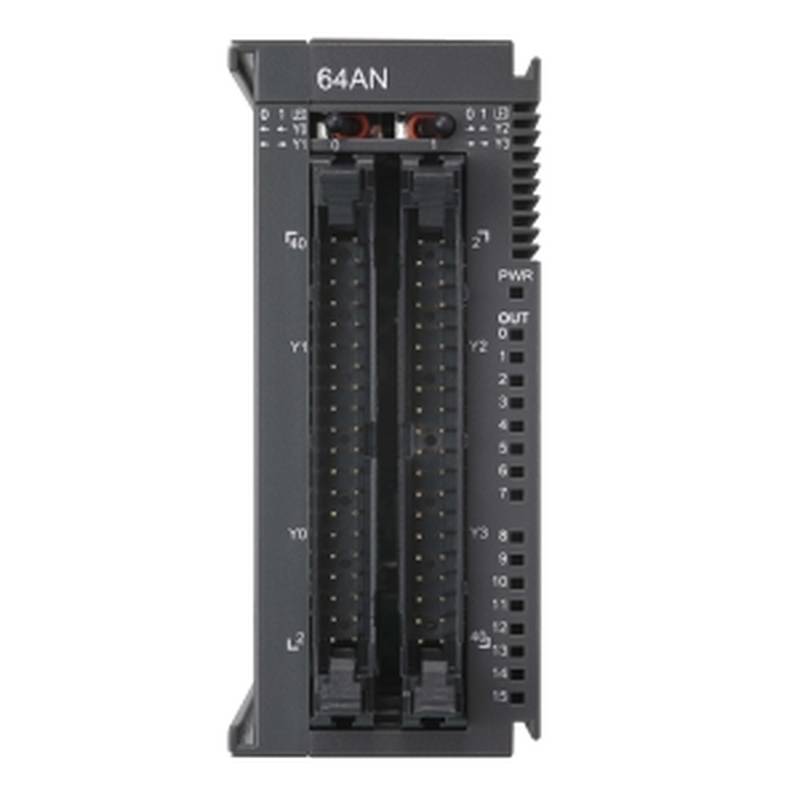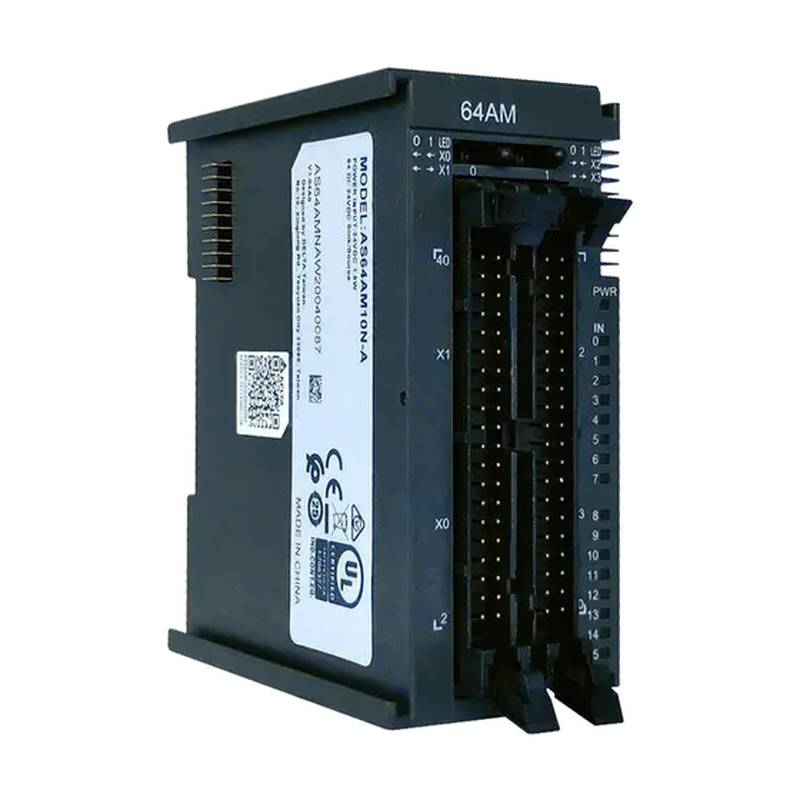
The Siemens 5SY6250-7CC is a high-current protection miniature circuit breaker (MCB) designed for robust electrical system safety. This 2-pole, 50A device offers superior reliability and performance in demanding industrial environments. Its key advantages include advanced overcurrent and short-circuit protection, high breaking capacity, and compliance with stringent international standards. Core features of the 5SY6250-7CC include a trip-free mechanism ensuring reliable disconnection, a clearly visible status indicator, and a compact design for space-efficient panel building. Technically, it operates within a voltage range suitable for various industrial applications and features a high short-circuit withstand capability crucial for protecting downstream equipment.
Siemens 5SY6250-7CC: Product Specifications
| Feature | Specification |
| :---------------------- | :------------------------------------------ |
| Product Type | Miniature Circuit Breaker (MCB) |
| Manufacturer | Siemens |
| Series | 5SY6 |
| Poles | 2 |
| Rated Current (In) | 50 A |
| Rated Voltage (Un) | 400V AC |
| Tripping Characteristic | C |
| Breaking Capacity (Icn) | 10 kA |
| Frequency | 50/60 Hz |
| Insulation Voltage (Ui) | 500V |
| Surge Withstand Voltage | 4 kV |
| Ambient Temperature | -25°C to +45°C |
| Protection Class | IP20 |
| Mounting Type | DIN Rail |
| Compliance | IEC/EN 60898, IEC/EN 60947-2 |
| Dimensions (H x W x D) | 88 mm x 35 mm x 70 mm |
| Terminal Type | Box terminal with wire protection clamp |
| Connection Cross-section| Solid conductor: 1.5 - 35 mm², Stranded conductor: 1.5 - 25 mm² |
| Status Indicator | Yes |
| Trip-Free Mechanism | Yes |
Core Features & Market Positioning
The Siemens 5SY6250-7CC distinguishes itself in the market through its robust construction and advanced protection capabilities, essential for industrial-grade applications. Its high breaking capacity of 10 kA ensures safe interruption of fault currents, a critical factor in preventing catastrophic equipment damage and ensuring personnel safety. The C-type tripping characteristic makes it ideal for inductive loads, providing a balance between protection against overloads and immunity to nuisance tripping caused by inrush currents common in motor starts. Siemens' reputation for quality and reliability further solidifies the 5SY6250-7CC's position as a trusted component in control panels and power distribution systems where unwavering performance is paramount.
Key Application Scenarios
This high-current protection MCB is indispensable in various industrial sectors requiring dependable circuit protection. It is frequently deployed in motor control centers (MCCs) to safeguard individual motor circuits from overloads and short circuits. Additionally, the Siemens 5SY6250-7CC finds application in main distribution boards for commercial buildings and manufacturing facilities, ensuring the integrity of power supply to critical equipment. Its 50A rating and 10 kA breaking capacity are well-suited for protecting power circuits, heavy-duty machinery, and distribution lines where substantial fault currents may occur. The device's suitability for inductive loads also makes it a prime choice for applications involving transformers and solenoid systems.
Practical System Integration Guidance
Integrating the Siemens 5SY6250-7CC into existing electrical infrastructure is straightforward due to its standard DIN rail mounting and universal compatibility with IEC compliant systems. Installers must ensure that the circuit breaker is securely fastened to the DIN rail and that terminal connections are made with the appropriate torque settings to prevent overheating and ensure reliable contact. When connecting conductors, the box terminal design accommodates a wide range of cross-sectional areas, supporting both solid and stranded wires from 1.5 mm² up to 35 mm². For optimal safety, always isolate the power supply before installation or maintenance, and verify that the ambient temperature remains within the specified operating range of -25°C to +45°C.
Operation and Risk Mitigation
The Siemens 5SY6250-7CC operates by automatically interrupting the circuit when it detects an overcurrent (overload or short circuit) exceeding its rated limits. The tripping mechanism is designed to be "trip-free," meaning the breaker cannot be held closed manually if a fault condition exists, thereby preventing severe damage and ensuring safety. To mitigate risks, always ensure the MCB's rated current and breaking capacity are correctly selected for the specific circuit load and potential fault levels. Regularly inspect terminals for signs of corrosion or loose connections, which can lead to increased resistance and potential fire hazards. Proper labeling of circuits controlled by the 5SY6250-7CC is also crucial for quick identification during troubleshooting.
Scalability & Long-Term Value
The 5SY6 series, to which the 5SY6250-7CC belongs, offers a degree of scalability through its compatibility with a range of Siemens industrial components and standard electrical enclosures. While MCBs themselves are protective devices rather than active network components, their standardization allows for easy replacement or upgrading to higher-rated devices within system limitations. Integration with modern industrial control systems (ICS) or the Industrial Internet of Things (IIoT) is typically achieved through associated monitoring and control equipment rather than direct digital interfaces on the MCB itself. The long-term value is derived from its durability, adherence to international standards, and Siemens' extensive support network, ensuring its reliable operation throughout the lifespan of the electrical installation.
Frequently Asked Questions
What is the primary function of the Siemens 5SY6250-7CC?
This device functions as a miniature circuit breaker, providing essential overcurrent protection for electrical circuits. It safeguards against overloads and short circuits to prevent damage.
It automatically interrupts power flow when fault conditions are detected. This prevents overheating, fires, and equipment failure in connected systems.
Its primary goal is to ensure the safety of personnel and the integrity of electrical installations in industrial and commercial settings.
How does the C-type tripping characteristic benefit industrial applications?
The C-type characteristic is ideal for circuits with high inrush currents, such as those powering motors or transformers. It prevents nuisance tripping during startup surges.
This characteristic offers a balance, tripping reliably for overloads while tolerating temporary current spikes. This enhances system stability and reduces unnecessary downtime.
For applications with moderate inductive loads, the C-curve ensures dependable protection without being overly sensitive to transient current demands.
What is the breaking capacity of the Siemens 5SY6250-7CC and why is it important?
The 5SY6250-7CC features a breaking capacity of 10 kA. This indicates its ability to safely interrupt a fault current of up to 10,000 amperes.
A high breaking capacity is crucial for safely containing and extinguishing electrical arcs that occur during short circuits. This prevents damage to the breaker and surrounding equipment.
Selecting an MCB with a breaking capacity that exceeds the maximum prospective fault current at its installation point is vital for overall system safety and compliance.
Can the Siemens 5SY6250-7CC be used in residential applications?
While it meets IEC standards, the 5SY6250-7CC is primarily designed for industrial and commercial power distribution. Its higher current rating and specific features suit these environments.
Residential applications typically utilize MCBs with lower current ratings and different tripping characteristics (like B or C types for lighter loads). It might be overkill for typical home circuits.
However, in specialized residential setups requiring higher current capacity or specific protection levels, it could be considered, provided it aligns with local electrical codes.
What are the recommended wiring practices for the Siemens 5SY6250-7CC?
Ensure that conductors are stripped to the correct length and inserted fully into the box terminals. Use appropriate ferrules for stranded conductors to ensure a secure connection.
Tighten terminal screws to the specified torque values using a calibrated torque wrench. This prevents loose connections, which can cause overheating and arcing.
Always use conductors with the correct cross-sectional area (1.5-35 mm² for solid, 1.5-25 mm² for stranded) as per the product specifications and local electrical codes.
What is the significance of the "2P" designation for this circuit breaker?
"2P" signifies that the Siemens 5SY6250-7CC is a two-pole circuit breaker. This means it simultaneously switches both the live (L) and neutral (N) conductors of a circuit.
Switching both poles is essential for complete isolation, especially in systems where neutral conductors carry current or in specific safety regulations that mandate full disconnection.
This two-pole configuration ensures that when the breaker trips, both the live and neutral lines are interrupted, offering enhanced safety compared to single-pole devices.
How does the Siemens 5SY6250-7CC protect against overload conditions?
Overload protection is achieved through a thermal tripping element within the MCB. This element heats up gradually when current exceeds the rated value for an extended period.
Once the thermal element reaches a specific temperature, it triggers a mechanism that opens the circuit breaker contacts, interrupting the power supply. This protects cables and equipment from heat damage.
The time it takes to trip depends on the magnitude of the overload; minor overloads will take longer to trigger the breaker than severe ones, providing a time-current protection curve.
What are the environmental operating limits for the Siemens 5SY6250-7CC?
The Siemens 5SY6250-7CC is designed to operate reliably within an ambient temperature range of -25°C to +45°C. Exceeding these limits can affect performance.
Operating above +45°C may lead to derating of the MCB's current-carrying capacity, potentially causing premature tripping or reduced lifespan. High temperatures can also impact insulation integrity.
Conversely, extremely low temperatures might affect the mechanical operation of the tripping mechanism. Proper ventilation and environmental control are crucial for optimal functionality.
What standards does the Siemens 5SY6250-7CC comply with?
This circuit breaker complies with key international standards, including IEC/EN 60898 and IEC/EN 60947-2. These standards define performance and safety requirements for MCBs.
Adherence to these IEC (International Electrotechnical Commission) and EN (European Norm) standards ensures the product has undergone rigorous testing for safety, reliability, and interoperability.
Compliance signifies that the 5SY6250-7CC meets the demanding quality and performance benchmarks expected in global electrical installations.
Where can I find the official datasheet or manual for the Siemens 5SY6250-7CC?
Official datasheets and manuals are typically available for download from the Siemens Industry Online Support (SIOS) platform. You will likely need to search using the product number.
Alternatively, authorized Siemens distributors or electrical equipment suppliers often provide access to technical documentation for the products they sell.
For specific application or installation queries not covered by standard documentation, contacting Siemens technical support directly is recommended.

















